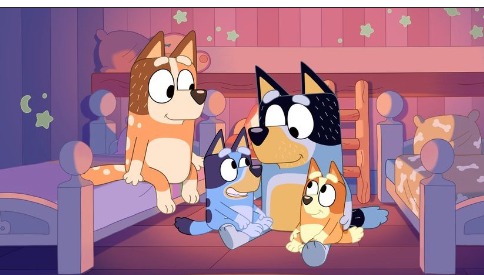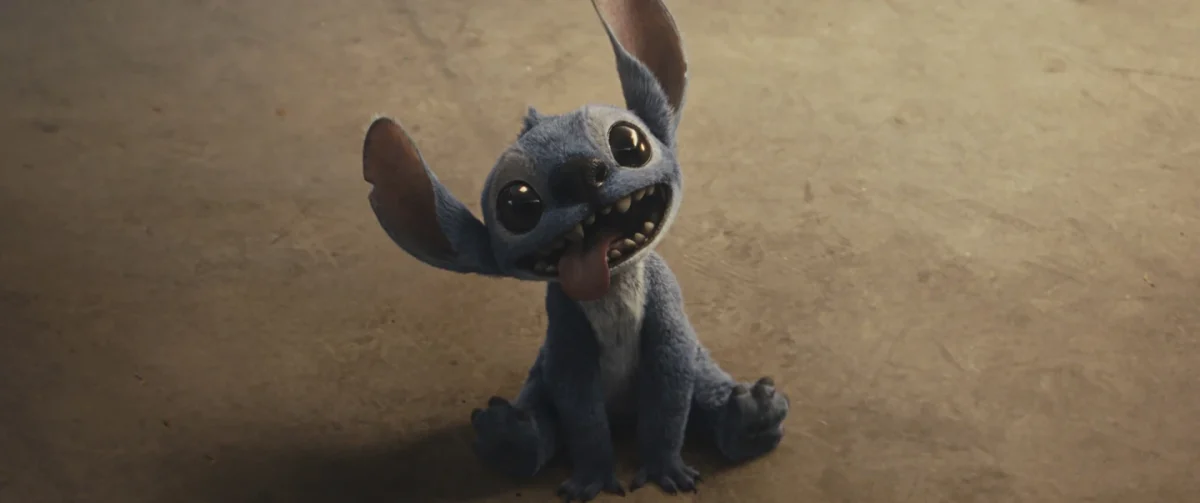“Bluey,” a loving kids show, was welcomed by a variety of ages. With the growing popularity that “Bluey” has on social media, the show has acquired a new and unexpected audience: Gen Z.
“It’s hard to believe that the characters aren’t human, it just feels so real and relatable,” junior Aubrey Hartman said.
For many, childhood shows and movies are a way to escape the harsh realities of our current society. When stressed, “Bluey” is uplifting and a simple way to relax and reminisce on the simpler times of youth.
“This series brings back a lot of memories and fun games I played in my childhood. We don’t really have that creativity or imagination anymore, which is sad,” Hartman said.
With Disney+ releasing season 3 on Jan. 12, this family of dogs have become increasingly popular. Currently, the U.S. audience demand for this show is 36.4% higher than the average TV show.
The Australian show follows a heeler puppy named Bluey and her experiences with family and friends. However, instead of fast-paced, extraordinary adventures, the show depicts relatable life stories. Episodes explore daily life excursions with Bluey and her younger sister, Bingo, as they play imaginary games or go to the farmers’ market with Mom and Dad.
While the series often seems to be light-hearted, it tackles serious topics in a way that aims to be entertaining for adults and kids, without being overwhelming. Episodes discuss infertility, death, growing up, setting boundaries and more.
“”Bluey” could meet the emotional or social needs of teenagers differently by offering perspectives on relationships, responsibilities and emotions through the lens of a child’s world,” AP Psychology teacher Ashley Taylor said.
Taylor believes that “Bluey” resonates with a teenage audience due to the show’s overarching theme of family, friendships and maturing.
For example, in the episode “Yoga Ball,” Bluey and Bingo play a game with their dad using a yoga ball. While playing, Bingo doesn’t like how rough her dad is being with her.
Eventually, she talks to her mom, who explains that Bingo needs to use her “big girl bark” to tell her dad that he’s crossing a boundary. It amplifies the message that it’s okay to ask for help and name things that you are not comfortable with.
This episode resonated with senior Juliet Marsh as it discussed the importance of boundaries.
“It was really sweet that they showed such an important need in a children’s show,” Marsh said.
Bluey’s parents, Chili and Bandit, resonate with the Gen Z audience greatly as their playful and supportive nature demonstrates a mindful view of mental health. Bandit encourages men to share their emotions, and Chili helps moms to feel more secure with themselves.
All characters, despite being dogs, are wholeheartedly human and display emotions that resonate across all generations of audiences.
“Bluey” and other kid shows have helped Marsh with her mental health.
“I came up with this trick a while ago, whenever I had a panic attack I would watch a children’s show,” Marsh said. “The colors and voices are a lot softer and it really helps me calm down when I’m overstimulated.”
While everyone’s individual experiences with mental health vary, the positive and heartwarming nature of “Bluey” offers a source of comfort and joy for some teenagers.
“It’s always important to consider a range of factors that influence mental health and to seek professional advice when needed,” Taylor urged.







